Kompaktní skládací sněžné lyže, jako ty od Snowfeet*, nabízejí jednodušší a přenosnější alternativu k tradičním dlouhým lyžím. Jsou lehké, vejdou se do batohu a fungují s běžnou zimní obuví nebo snowboardovými botami – ideální pro začátečníky nebo rekreační lyžaře. Nicméně nemusí podávat tak dobrý výkon v hlubokém sněhu nebo při vysokých rychlostech ve srovnání s dlouhými lyžemi od značek jako Rossignol nebo Atomic. Zde je rychlý přehled:
- Kompaktní lyže (Snowfeet*): Snadno přenosné, vhodné pro začátečníky, cenově dostupné ($150–$690), skvělé pro rychlé zatáčky a minimální údržbu.
- Dlouhé lyže: Lepší pro rychlost a hluboký sníh, ale těžší, obtížnější na přepravu, dražší ($400+) a vyžadují více údržby.
Rychlé srovnání
| Faktor | Kompaktní skládací lyže (Snowfeet*) | Tradiční dlouhé lyže |
|---|---|---|
| Přenosnost | Vejdou se do batohu, lehké | Objemné, vyžaduje střešní nosiče |
| Cena | $150–$690 | $400–$1,500+ |
| Křivka učení | Snadné pro začátečníky | Strmější, obtížnější ovládání |
| Hluboký sníh | Omezený výkon | Vynikající plovatelnost |
| Rychlost | Nejlepší pro rekreační použití | Navrženo pro vysoké rychlosti |
| Údržba | Minimální | Vyžaduje pravidelnou údržbu |
Kompaktní lyže jsou ideální pro rekreační lyžaře a cestovatele, zatímco dlouhé lyže jsou lepší pro pokročilé lyžaře hledající rychlost a stabilitu.
Elan Voyager skládací lyže První nezávislé hodnocení na světě
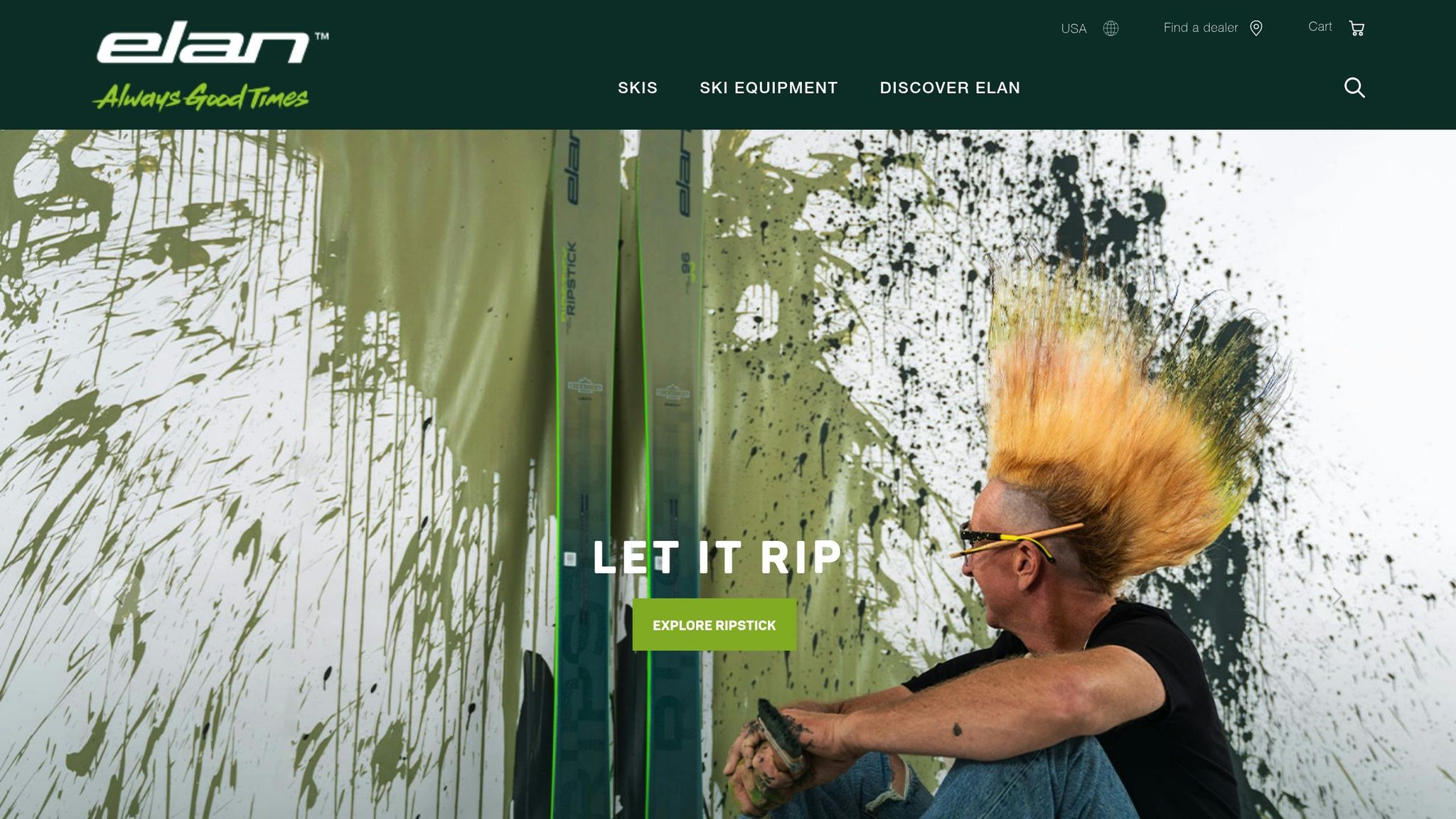
1. Snowfeet* Kompaktní lyžařské produkty
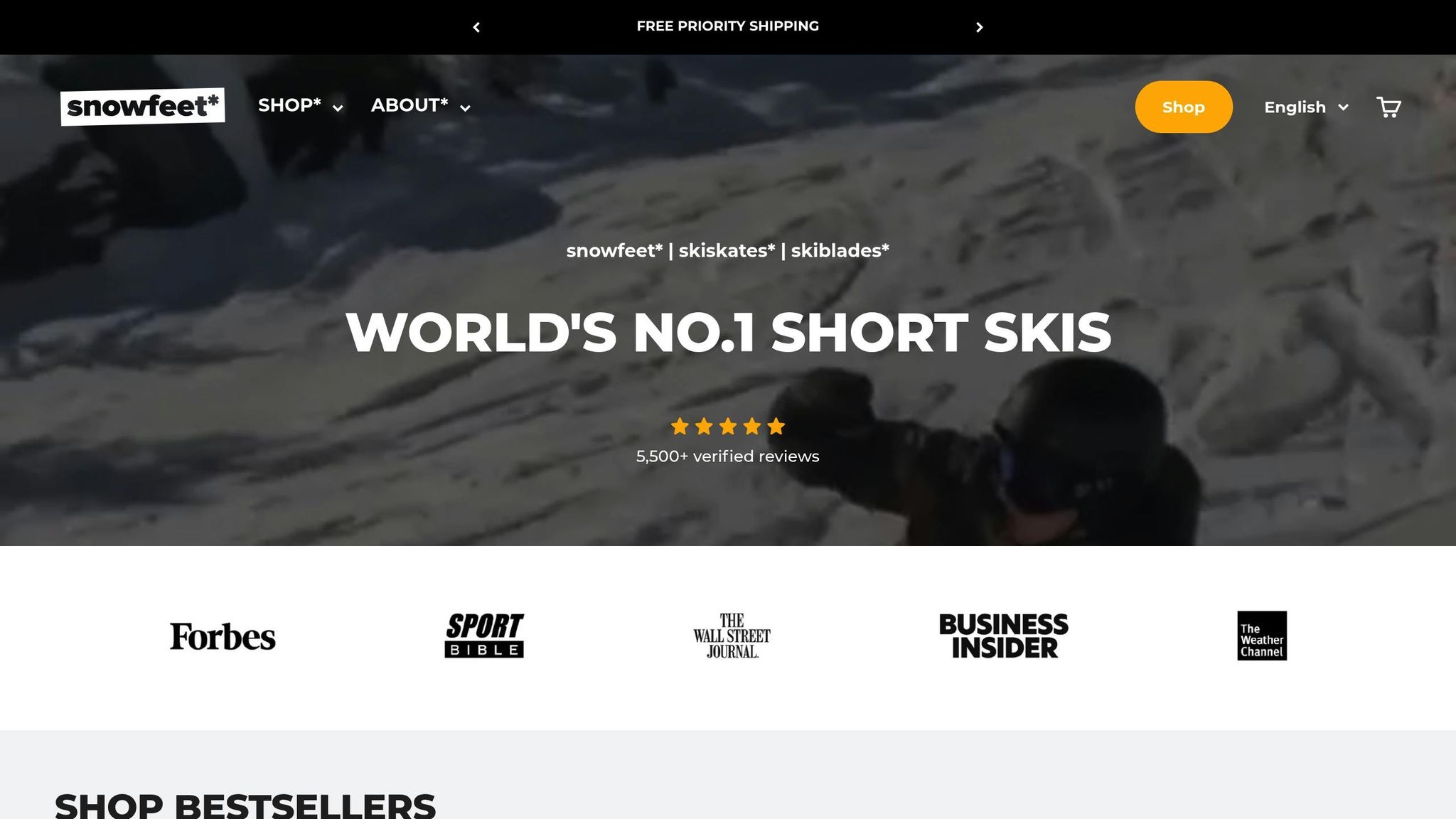
Snowfeet* otřásá scénou zimních sportů se svými kompaktními lyžařskými designy v rozmezí od 17 do 47 palců (44 cm až 120 cm). Ve srovnání s tradičními lyžemi, které často přesahují délku 67 palců (170 cm), je jasné, proč přitahují pozornost.
Vezměte si například Snowfeet Mini Ski Skates. S délkou pouhých 17 palců (44 cm) jsou to nejkompaktnější možnost. Umožňují zažít něco, co lze popsat jen jako "bruslení na sněhu." Navíc jsou neuvěřitelně lehké – mnohem lehčí než tradiční lyže od značek jako Rossignol nebo Atomic. Dokonce je můžete bez váhání hodit do batohu.
Obratnost je oblast, kde Snowfeet* skutečně vyniká. Na rozdíl od tradičních lyží od značek jako Head nebo Elan, které mohou být v úzkých prostorách těžkopádné, jsou Snowfeet* lyže navrženy pro rychlé a ostré pohyby. Díky tomu jsou snem pro navigaci na přeplněných svazích nebo rychlé zatáčky.
Můžete si myslet, že kratší lyže obětují stabilitu, ale Snowfeet* dokazuje opak. Navzdory běžnému přesvědčení, že delší lyže jsou stabilnější, tyto kompaktní modely nabízejí působivou kontrolu, zejména pro začátečníky. Ve skutečnosti mnoho nováčků preferuje lyže o 4 až 6 palců kratší než ty, které používají experti, protože se s nimi lépe manipuluje.
Další výrazná vlastnost? Jejich všestrannost. Snowfeet* lyže zvládnou všechny druhy terénu s lehkostí. Ať už sjíždíte upravené sjezdovky, navštěvujete snow parky nebo zdoláváte boule, tyto lyže vás nezklamou. Jsou také perfektní pro triky jako jízda pozpátku, otáčení nebo skákání – pohyby, které mohou být u tradičních dlouhých lyží neohrabané.
A zapomeňte na hůlky! Zatímco tradiční lyže často spoléhají na hůlky pro rovnováhu a zatáčky, design Snowfeet* je natolik stabilní, že můžete lyžovat sebevědomě i bez nich. Tato jednoduchost je činí ještě atraktivnějšími.
Potřebujete rychle zastavit? Kratší délka těchto lyží to výrazně usnadňuje. S menší setrvačností můžete provést nouzové zastavení bez pokročilých dovedností, které jsou potřeba u delších lyží.
Co opravdu odlišuje Snowfeet* je to, jak spojují bruslení a lyžování do jednoho jedinečného zážitku. Tento hybridní přístup nabízí nový pohled na zimní sporty a oslovuje každého, kdo hledá něco víc než tradiční lyžování nebo snowboarding. Není divu, že Snowfeet* vede v rozvíjejícím se sportu skiskatingu.
2. Dlouhé lyže od hlavních značek
Dlouhé lyže od předních značek jako Rossignol, Atomic a Head měří přes 67 palců (170 cm), některé modely dokonce přesahují 71 palců (180 cm). I když mají své výhody, přinášejí také praktické výzvy.
Za prvé, dlouhé lyže jsou těžší než jejich kratší protějšky, což znamená, že vás mohou rychleji unavit během delších jízd. Jejich přeprava také není žádná legrace – nacpat lyže delší než 67 palců do běžného auta nebo úložného prostoru může být jako řešit hádanku. A nezapomeňme na dodatečné náklady spojené s těmito většími sadami.
Pro začátečníky začínají tradiční lyžařské sady kolem 400 $, ale výkonnostní modely mohou stoupnout až na 1 000 $ nebo více. Rossignol například nabízí lyže pro začátečníky v cenovém rozmezí 300–600 $, zatímco jejich závodní lyže mohou přesáhnout 1 500 $. Když připočítáte boty a vázání, celkové náklady se snadno pohybují od 700 do 1 500 $. Navíc pravidelná údržba – jako kompletní servis, který obvykle stojí kolem 30–50 $ – přidává k průběžné investici.
Co se týče výkonu, dlouhé lyže mají své zvláštnosti. Vytvářejí větší odpor a rychlé zatáčky jsou složitější, i s precizními designy od značek jako Head a Elan. Projíždění úzkými místy nebo přeplněnými svahy často vyžaduje pokročilé dovednosti, které noví lyžaři možná ještě nemají. Navíc větší délka znamená více údržby, což může působit jako nepříjemnost.
"Delší lyže poskytují větší stabilitu a rychlost, což je dobré pro zkušené lyžaře a rychlé sjezdy. Také lépe plavou na hlubokém sněhu. Ale mohou být těžší na ovládání a zatáčení, zejména pro začátečníky."
Pro začátečníky může být křivka učení s dlouhými lyžemi strmá. Techniky jako zatáčení a zastavování jsou obtížnější a lyže působí méně stabilně při nižších rychlostech – právě tehdy, kdy začátečníci potřebují nejvíce kontroly. To může skutečně ztížit budování sebevědomí na svahu.
Bezpečnost je další obava. Delší lyže mohou zvýšit riziko zranění při pádech, protože pravděpodobně způsobí vážnější nárazy a ztíží zotavení. Jsou také méně odpouštějící, když narazíte na překážky jako kameny nebo pařezy.
Navzdory těmto překážkám mnoho tradičních výrobců setrvává u svých osvědčených designů. Rossignol například zdůrazňuje svůj důraz na "posouvání hranic lyžařské technologie, aby zajistil nejlepší kombinaci kontroly, přesnosti a stability". Zatímco tento přístup funguje skvěle pro zkušené lyžaře, kteří zvládají rychlé sjezdy a náročný terén, často nechává rekreační lyžaře s pocitem, že používají vybavení, které je pro jejich potřeby zbytečně přehnané.
Nakonec, neustálá údržba – jako broušení hran, voskování a seřizování – může ubírat na zábavě při lyžování.
sbb-itb-17ade95
Výhody a nevýhody
Zde je rychlý přehled, jak si kompaktní skládací lyže stojí ve srovnání s tradičními dlouhými lyžemi:
| Faktor | Kompaktní skládací lyže (Snowfeet*) | Tradiční dlouhé lyže |
|---|---|---|
| Přenosnost | Snadno přenosné, vejdou se do batohu (obvykle pod 39 palců) | Objemné, často přes 67 palců, vyžadující střešní nosiče nebo velké úložné prostory |
| Hmotnost | Lehké a přenosné | Těžší, což ztěžuje přepravu |
| Cena | 150–690 $ za kompletní vybavení | Začíná kolem 400 $ a zvyšuje se kvůli samostatnému vybavení jako boty a vázání |
| Křivka učení | Přátelské pro začátečníky, snadné ovládání | Složitější, s prudší křivkou učení |
| Obratnost | Skvělé pro rychlé zatáčky a obratnost | Vyžaduje více úsilí pro ostré zatáčky |
| Rychlost | Nejlepší pro rekreační rychlosti | Navrženo pro vyšší rychlosti s větší stabilitou |
| Hluboký sníh | Omezené plavání v prašanu kvůli menší ploše | Vynikající plavání v hlubokém sněhu |
| Údržba | Minimální údržba | Pravidelné seřizování nutné |
Jak zdůrazňuje Snowfeet*:
"Snowfeet jsou malé a lehké, takže je můžete vzít kamkoli. Nepotřebujete lyžařské boty ani žádné jiné těžké a drahé vybavení."
Kompaktní lyže jsou neuvěřitelně přenosné. Hodíte je do batohu, uložíte do kufru nebo nastoupíte do veřejné dopravy – není potřeba objemných střešních nosičů nebo speciálního úložiště. Jejich lehký design je ideální pro rychlé zatáčky a obratné pohyby na upravených sjezdovkách nebo v terénních parcích. Mohou však mít problémy v hlubokém prašanu kvůli menší ploše.
Tradiční dlouhé lyže naopak vynikají při vysokých rychlostech a v hlubokém sněhu. Značky jako Rossignol a Atomic je navrhují pro stabilitu a výkon, i když mohou působit méně obratně v úzkých místech. Mají také strmější křivku učení díky složitějším upevněním bot a nastavením vázání.
Jakub F, influencer Snowfeet, dokonale vystihuje kouzlo kompaktních lyží:
"S těmito malými lyžemi se cítíte mnohem obratnější, rychlejší a především – pohodlně. Žádné přezky, žádné těžké boty – jen připoutejte a jeďte."
Co se týče ceny, kompaktní lyže jsou jasným vítězem. Sety Snowfeet* se pohybují od 150 do 690 dolarů, což nabízí cenově dostupnou alternativu k tradičním systémům, které často vyžadují další investice do bot a vázání.
Co se týče odolnosti, všechny lyže čelí opotřebení, od poškození hran až po problémy s jádrem. Kompaktní lyže však, navržené pro rekreační použití, obvykle vydrží méně stresu než tradiční lyže určené pro náročnější podmínky.
Závěr
Kompaktní skládací sněžné lyže, jako ty od Snowfeet*, otřásají sjezdovkami jako praktická alternativa k tradičním dlouhým lyžím. Zatímco velká jména jako Rossignol, Atomic a Head zůstávají u svých těžších, delších modelů, pozornost se přesouvá k lyžím, které jsou lehčí, snadněji ovladatelné a více přizpůsobivé.
Jedna velká výhoda? Náklady. Tradiční lyžařské vybavení často vyžaduje drahé doplňky jako boty a vázání, zatímco produkty Snowfeet* udržují věci jednoduché a cenově dostupné. Navíc jejich kompaktní velikost znamená, že nepotřebujete střešní nosiče nebo objemné skladovací řešení - prostě je hoďte do tašky a vyražte.
Ale nejde jen o úsporu peněz nebo místa. Tyto kratší lyže dělají lyžování přístupným a zábavným, zejména pro začátečníky. Jsou posilovači sebevědomí, pomáhají novým lyžařům se v tom zorientovat, zatímco zkušení profíci dostanou obratnost pro triky, skoky a rychlé manévry. A pro cestovatele? Jsou snem - dost malé, aby se vešly do vašeho obyčejného zavazadla bez jakýchkoli komplikací.
Co je opravdu odlišuje, je jejich univerzálnost. Ať už sjíždíte upravené sjezdovky, navštěvujete terénový park nebo zdoláváte lehký prašan, kompaktní lyže to vše zvládnou bez nutnosti měnit vybavení. To dělá Snowfeet* výraznou volbou pro každého, kdo hledá svobodu, zábavu a flexibilitu na svazích. Je to lyžování zjednodušené.
Často kladené dotazy
Jak si kompaktní skládací sněhové lyže jako Snowfeet vedou ve srovnání s tradičními lyžemi na různých terénech?
Kompaktní skládací sněhové lyže, jako ty od Snowfeet, přináší novou úroveň flexibility do lyžování. S délkami od pouhých 43 do 120 cm jsou tyto kratší lyže snem pro rychlé zatáčky a projíždění úzkých míst, ať už se proplétáte mezi stromy nebo zdoláváte muldy. Jejich kompaktní velikost vám dává více kontroly a obratnosti na různých svazích. A tady je to nejlepší - jsou skládací a lehké, což je dělá super snadnými na přenášení, ať už cestujete nebo jen vyrážíte na pohodový lyžařský den.
Teď si to porovnejte s tradičními lyžemi, které obvykle měří mezi 150 a 180 cm. Jasně, vynikají v rychlostní stabilitě a velkých, plynulých zatáčkách. Ale upřímě - jsou objemné, vyžadují speciální lyžařské boty a nejsou zrovna přívětivé pro začátečníky. Snowfeet lyže na druhou stranu fungují s vašimi obyčejnými zimními botami, což je opravdový přelom pro nováče i zkušené lyžaře. Ať už se proháňíte po upravených tratích, objevujete volný terén nebo vyrážíte na čerstvý sníh, tyto kompaktní lyže nabízejí zábavnou a bezstarostnou alternativu k obvyklému dlouhému lyžařskému vybavení. Dokazují, že někdy je menší opravdu lepší.
Co dělá Snowfeet kompaktní lyže skvělým výběrem pro začátečníky ve srovnání s tradičními dlouhými lyžemi?
Snowfeet kompaktní lyže jsou skvělou volbou pro začátečníky, a tady je proč: jsou lehké a kratší - v rozmezí od cca 38 do 120 cm. Tato menší velikost je mnohem snazší ovladatelná a manévrovatelná, což může být pro nováče ve světě lyžování} opravdovým přelomem. Místo boje s dlouhými, těžkými lyžemi se můžete soustředit na budování sebevědomí a osvojování dovedností bez zbytečné fyzické záte&že.
Další velké plus? Snowfeet lyže fungují s běžnými zimními botami, snowboardovými botami nebo lyžařskými botami. To znamená, že nemusíte investovat do objemné a drahé lyžařské výbavy, abyste mohli vyrazit na svah. Pro každého, kdo si chce jen tak zkusit zimní sporty nebo má omezený rozpočet, to dělá lyžování mnohem dostupnějším.
A nezapomeňme na jejich velikost - tyto kompaktní lyže jsou super snadné na přenášení a skladování, což je ideální pro spontánní výlety nebo když řídíte menší auto. Jasně, tradiční dlouhé lyže mohou mít výhodu v stabilitě při vysokých rychlostech, ale mohou působit zastrašujícím dojmem a vyžadují více času na zvládnutí. Snowfeet kompaktní lyže nabízejí přívětivější způsob, jak si užít svahy, a umožňují vám skočit do zábavy bez starostí s tradiční výbavou.
Jaké jsou nejlepší způsoby, jak udržovat Snowfeet kompaktní lyže a udržet je v perfektním stavu?
Jak udržovat své Snowfeet kompaktní lyže
Udržovat své Snowfeet kompaktní lyže v perfektním stavu nemusí být složité. Trocha péče výrazně pomůže zajistit jejich dobrý výkon a dlouhou životnost. Tady je, co je potřeba udělat:
- Po každém použití je očistěte a osušte: Po dni na svahu si udělejte chvilku na setření nečistot, sněhu nebo vlhkosti. To pomáhá předcházet korozi a udržuje lyže v dobrém stavu. Ukládejte je na chladném a suchém místě, aby nedošlo k poškození.
- Pravidelně je voskujte: Stejně jako tradiční lyže od značek jako Rossignol nebo Atomic, i Snowfeet lyže potřebují pravidelné voskování. Snažte se nanášet čerstvou vrstvu každých 4–6 výjezdů. To udržuje skluznici hladkou, zlepšuje skluz a zabraňuje přilepení sněhu.
- Udržujte hrany ostré: Ostré hrany znamenají lepší kontrolu, zejména na zledovatělých místech. Pravidelně je kontrolujte a brousíte, abyste zůstali v bezpečí a měli kontrolu.
- Zkontrolujte poškození: Prohlédněte skluznici, hrany a vázání na známky opotřebení nebo problémů. Včasné odhalení problémů znamená, že je můžete opravit dříve, než se zhorší.
- Ukládejte je správně mimo sezónu: Před uskladněním lyží na léto je jednou očistěte a navoskujte. Poté je uložte na místo s kontrolovanou teplotou, aby nedošlo k deformaci nebo vyschnutí.
Dodržováním těchto jednoduchých údržbových návyků udržíte své Snowfeet kompaktní lyže připravené k akci - a odmění vás hladkým a spolehlivým výkonem pokaždé, když vyrazíte na svah!





















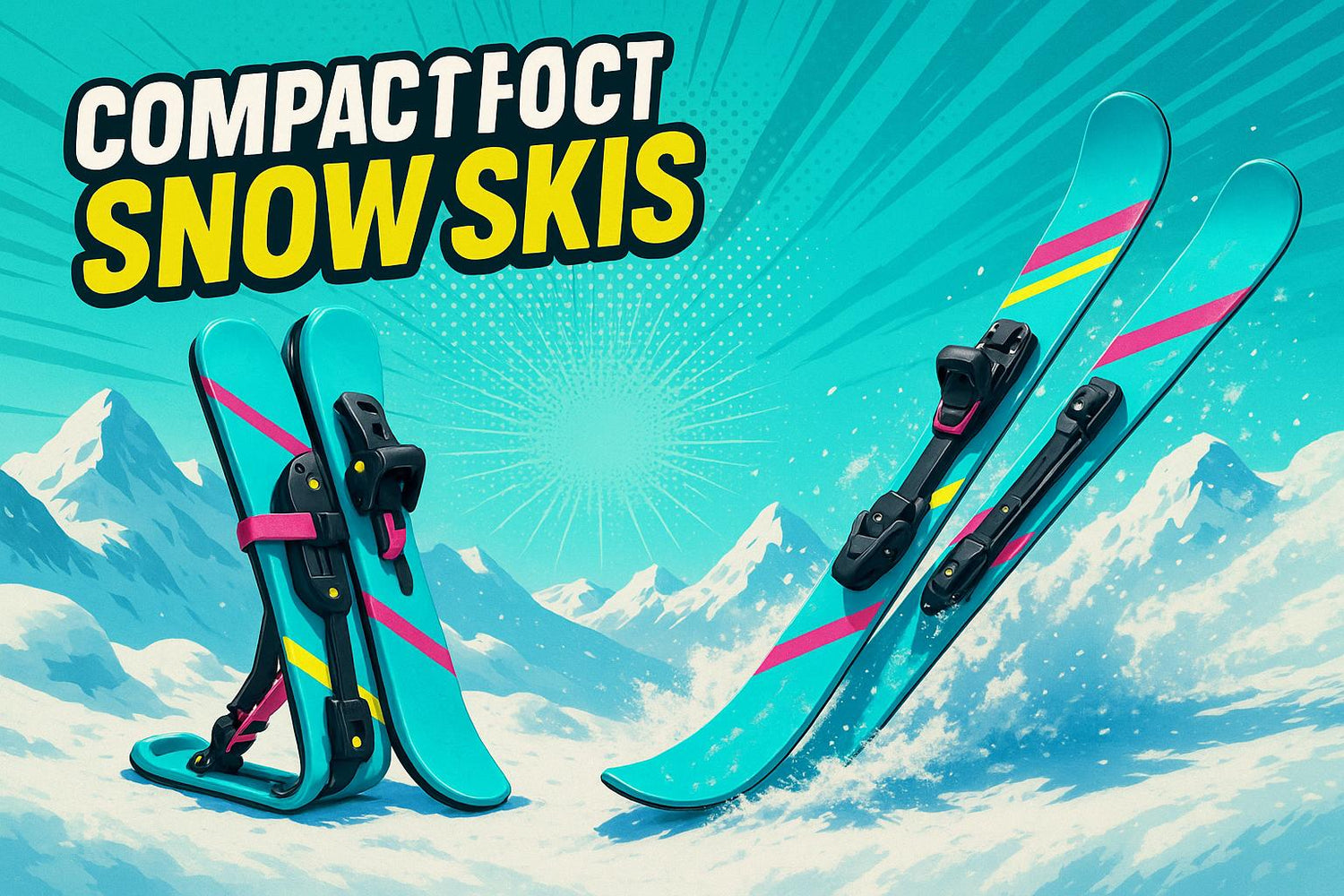
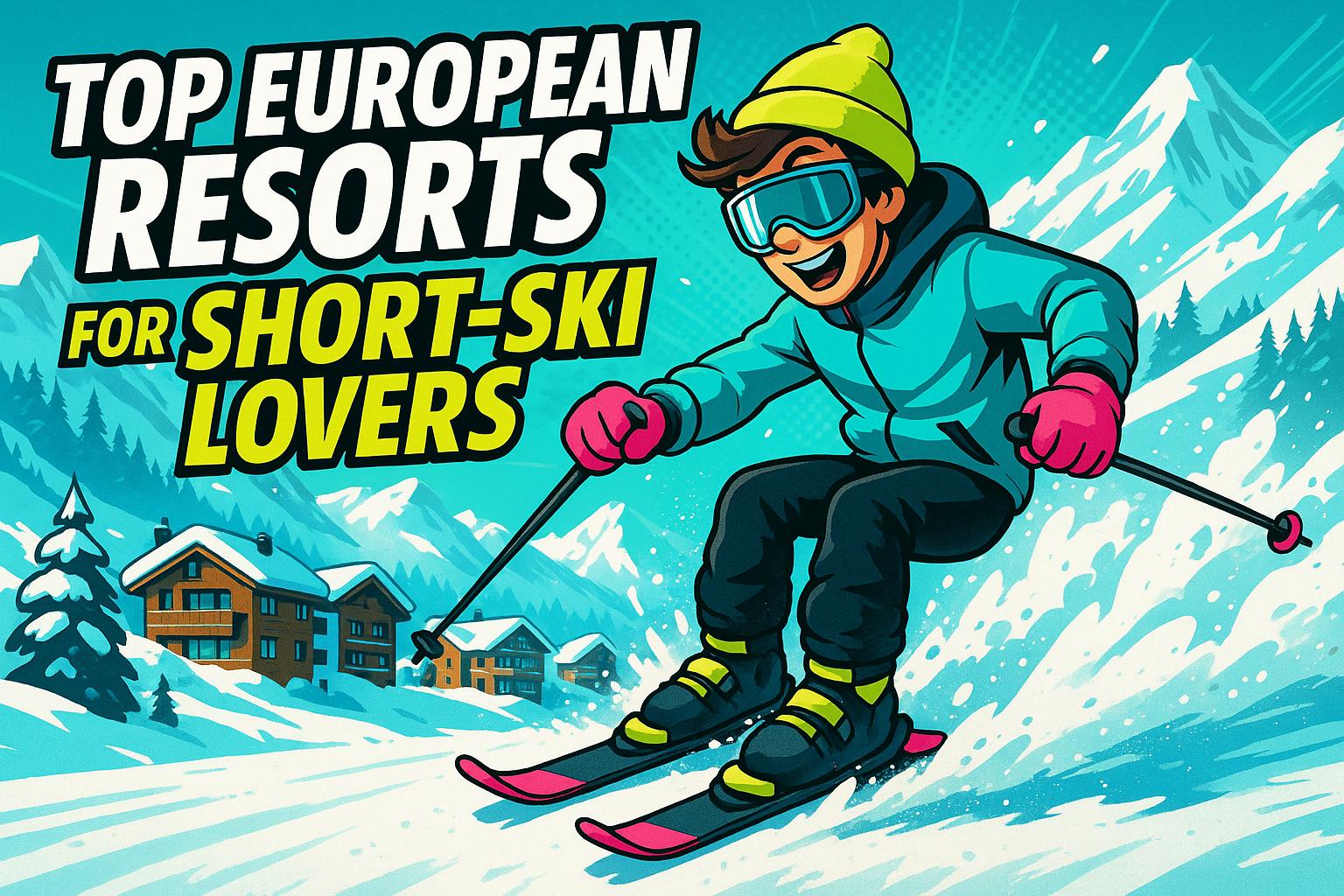
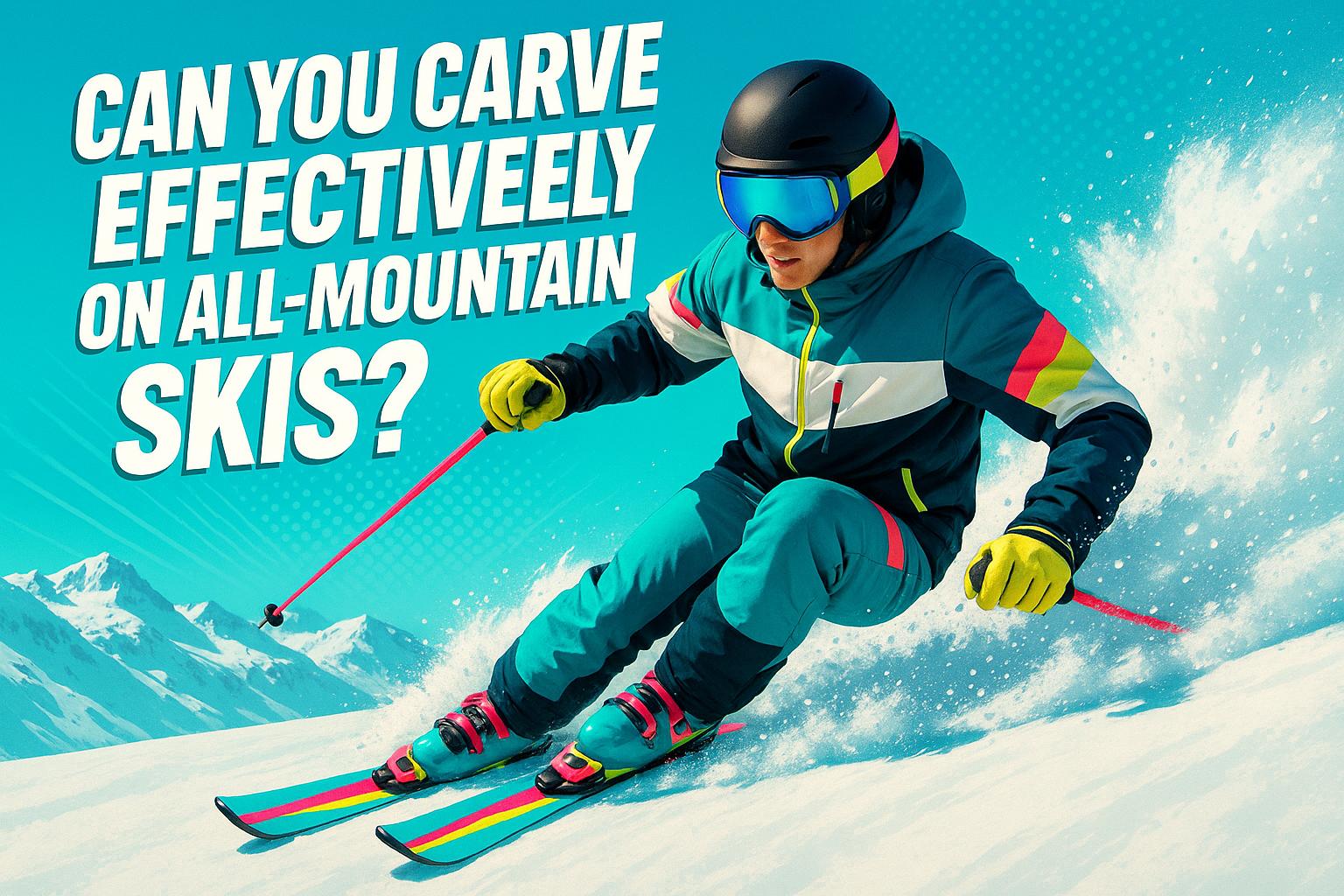










Zanechte komentář
Tento web je chráněn službou hCaptcha a vztahují se na něj Zásady ochrany osobních údajů a Podmínky služby společnosti hCaptcha.